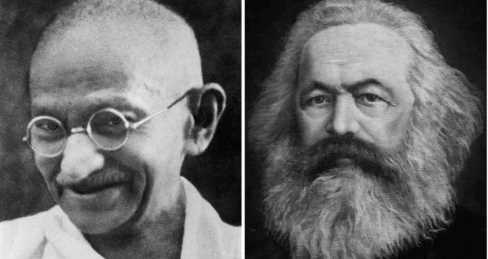When it comes to the state, there are two schools of thought that have influenced the political landscape – Gandhian and Marxian. Both have their own distinct views on the role of the state and its relationship with the people. Here, we take a look at the key differences between Gandhian and Marxian states.
The Gandhian state is based on the principle of trusteeship. This means that the state is seen as a trustee of the people and is tasked with looking after their interests. The state is not seen as a separate entity from the people, but rather as an extension of them. The key goals of the Gandhian state are to promote the welfare of the people and to ensure their economic and social rights.
The Marxian state, on the other hand, is based on the principle of class conflict. This means that the state is seen as an instrument of the ruling class, which is used to oppress the working class. The state is seen as a separate entity from the people and is not concerned with their welfare. The key goals of the Marxian state are to maintain the power of the ruling class and to exploit the working class.

Gandhian state:
1. The Gandhian state is based on the principles of ahimsa (non-violence) and satyagraha (resistance to tyranny).
2. The Gandhian state is characterized by a high degree of decentralization. The authority of the state is diffused throughout society, and there is a large measure of self-government at the grassroots level. The village is the basic unit of the Gandhian state, and each village is autonomous.
3. The Gandhian state is an egalitarian state where all citizens are equal before the law.
4. The Gandhian state is a welfare state where the government is responsible for the welfare of the people.
5. The Gandhian state is a federal state where power is shared between the central and state governments.
6. The Gandhian state is based on the principle of self-reliance. The state does not interfere in the economic affairs of the people. The people are free to produce and exchange goods and services according to their own needs and wants.
Marxian state:
1. The Marxian state is based on the principles of class struggle and dialectical materialism.
2. The Marxian state is a centralized state where power is concentrated in the hands of the ruling class. The state owns the means of production, and the ruling class controls the state. The state administers the economy and dictates the terms of production.
3. The Marxian state is a class state where the ruling class exploits the working class.
4. The Marxian state is an autocratic state where the government is not accountable to the people.
5. The Marxian state is a dictatorship of the proletariat where the working class rules in the interests of the working class.
6. The Marxian state, is based on the principle of central planning. The state controls the economy and tells the people what to produce and how to produce it. The people have no say in the economic affairs of the state.